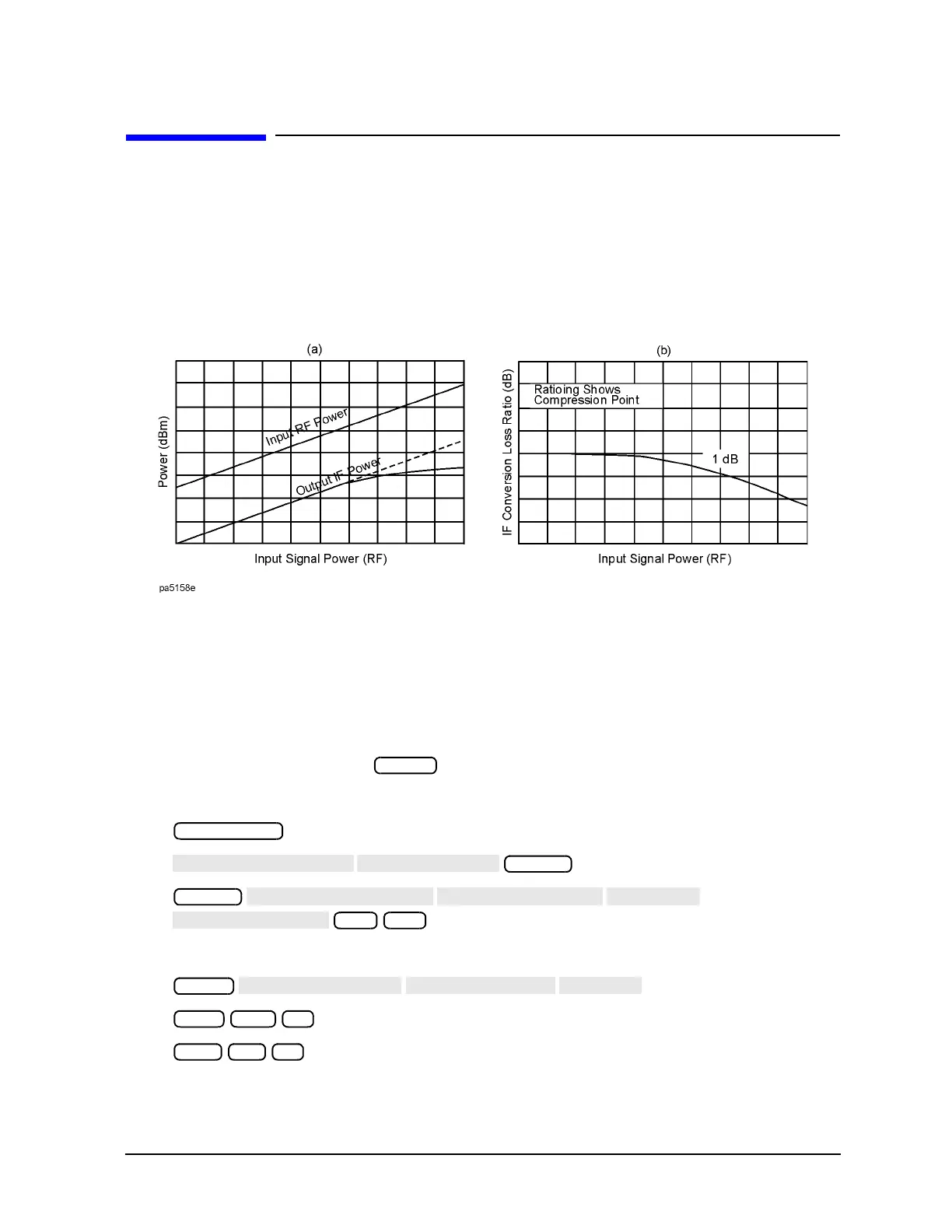2- 39
Making Mixer Measurements
Conversion Compression Using the Frequency Offset Mode
Conversion Compression Using the Frequency Offset Mode
Conversion compression is a measure of the maximum RF input signal level where the mixer provides linear
operation. The conversion loss is the ratio of the IF output level to the RF input level. This value remains
constant over a specified input power range. When the input power level exceeds a certain maximum, the
constant ratio between IF and RF power levels will begin to change. The point at which the ratio has
decreased by 1 dB is called the 1 dB compression point. See
Figure 2-27.
Figure 2-27 Conversion Loss and Output Power as a Function of Input Power Level Example
Notice that the IF output power increases linearly with the increasing RF signal, until mixer compression
begins and the mixer saturates.
The following example uses a ratio of mixer output to input power and a marker search function to locate a
mixer's 1 dB compression point.
1. Set the LO source to the desired CW frequency of 600 MHz and power level to 13 dBm.
2. Initialize the analyzer by pressing .
3. Set the analyzers LO frequency to match the frequency of the LO source by pressing:
4. To set the analyzer to the desired power sweep range, press:
5. Make the connections, as shown in Figure 2-28.

